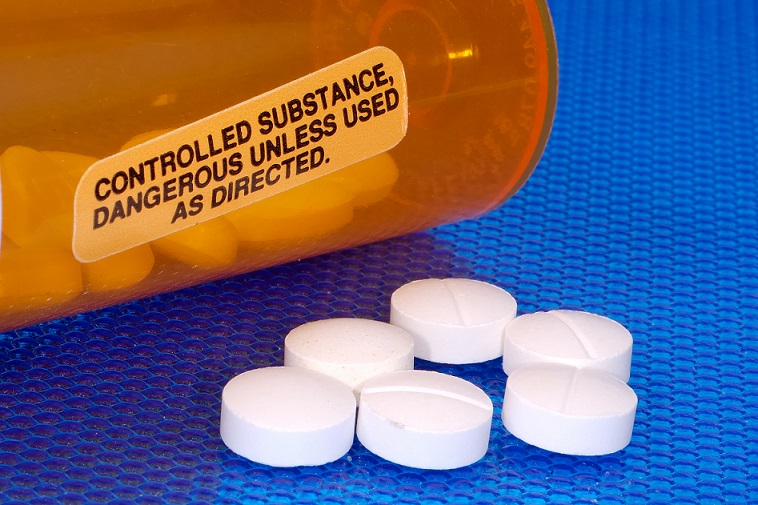Gabapentin, an opioid alternative, is being abused at an alarming rate across Ohio. As a result, state officials are considering reclassifying this drug as a controlled substance. Gabapentin (Neurontin) is typically prescribed to treat seizures and nerve pain in adults. This drug became more popular amidst the opioid crisis in an effort to replace opioids with a safer alternative. However, several states have recently made the decision to make gabapentin a controlled substance due to the abuse of this drug.
Cameron Mcnamee, director of policy and communications for the State of Ohio Board of Pharmacy recently stated, “An emerging pattern of abuse has state officials considering whether something needs to be done”.
In addition, he informed the Columbus Dispatch newspaper that the pharmacy board would be discussing the future of gabapentin near this upcoming summer. This drug has become the fourth most prescribed drug as of July, according to GoodRx. Shockingly, this means that gabapentin was prescribed more often than Amoxicillin- a common antibiotic.
What is Gabapentin?
Gabapentin, or Neurontin, is used to treat seizures and nerve pain. As of recently, this medication has been found to be a safer alternative for opioids. Gabapentin is not a controlled substance and there is little chance of it producing a high when used alone. However, if someone takes an extremely large amount, feeling intoxicated is possible. Often times, people will take gabapentin in combination with other drugs. When gabapentin is mixed with drugs such as muscle relaxants, opioids, or anxiety medications it produces a more intense high. gabapentin’s high causes feelings of calmness, relaxation, and euphoria.
Risks of Gabapentin Abuse
When used recreationally, individuals will have to consume a significantly larger amount of gabapentin. In fact, some users have reported taking up to 5,000 milligrams of gabapentin at once. At the very most, patients are only prescribed 1,800 milligrams per day. Taking high doses of gabapentin can result in the amplification of severe side-effects. As a result, users may experience convulsions and seizures.
Additionally, taking gabapentin in combination with opioids can increase the risk of respiratory depression and overdose. This is formally known as polydrug use, which contributes to the rising numbers of overdoses each year. Polydrug users will take two or more drugs at once to experience the desired effect. In doing so, the side-effects of each drug consumed will become intensified. This is especially dangerous when abusing gabapentin and opioids due to the high risk of overdosing when using large amounts.
Signs of Gabapentin Abuse
Due to the popularity of gabapentin abuse in Ohio, it is important to be able to identify the signs. Side effects that may indicate gabapentin abuse include:
- Loss of balance
- Constant fatigue
- Short-term memory loss
- Being unable to multitask
- Trembling in arms
- Flulike symptoms or fever
- Depression and anxiety
While some of these symptoms are displayed through proper use of gabapentin, they will not appear as severe. Gabapentin can create a drowsy or calming effect. When used in combination with opioids, muscle relaxants, or anxiety medications it can produce a euphoric effect. This effect is similar to that of commonly abused opioids. In addition, a severe risk of gabapentin abuse is an overdose. Gabapentin overdose would display sedating effects, muscle weakness, lethargy, and drooping eyelids.
Gabapentin Abuse in Ohio
The state of Ohio has taken notice of an increase in gabapentin abuse as of lately. According to Krisanna Deppen, a physician with OhioHealth’s Grant Medical Center, she has noticed a recent upswing in the abuse of this medication. Deppen believes this is due to a number of things, but mainly because of gabapentin not being easily traceable by drug screening tests. In addition, a common use of this medication is to treat symptoms of withdrawal. With the current opioid crisis, prescribing medications to alleviate withdrawal symptoms has become increasingly popular. If Ohio moves forward in reclassifying gabapentin as a controlled substance, it will set restrictions on prescribing the medication. As a result, doctors who prescribe and dispense gabapentin will receive more training.
Anytime a medication becomes a controlled substance there are benefits and risks to consider. For example, reclassifying gabapentin will make it harder for those abusing it to obtain them. However, this could make it harder for people who truly need this medication to receive it. Ernest Boyd, executive director of the Ohio Pharmacists Association, expressed his concern on this issue. He believes that this reclassification could prevent people from receiving the treatment they need. However, he stated if more evidence on the dangers of gabapentin comes to light, that changes will be made.
Treatment for Gabapentin Addiction
Ohio is currently weighing the risks and benefits of making gabapentin a controlled substance. However, changes are likely to be made this year. With any medication, there will always be risks and benefits. Awareness and education are vital to a patient’s safety when taking a new medication. However, sometimes dependence and addiction can occur despite being educated on a substance. If you or a loved one are suffering from an addiction to gabapentin, seek help today. Professional addiction treatment centers are available to provide the help you need.







